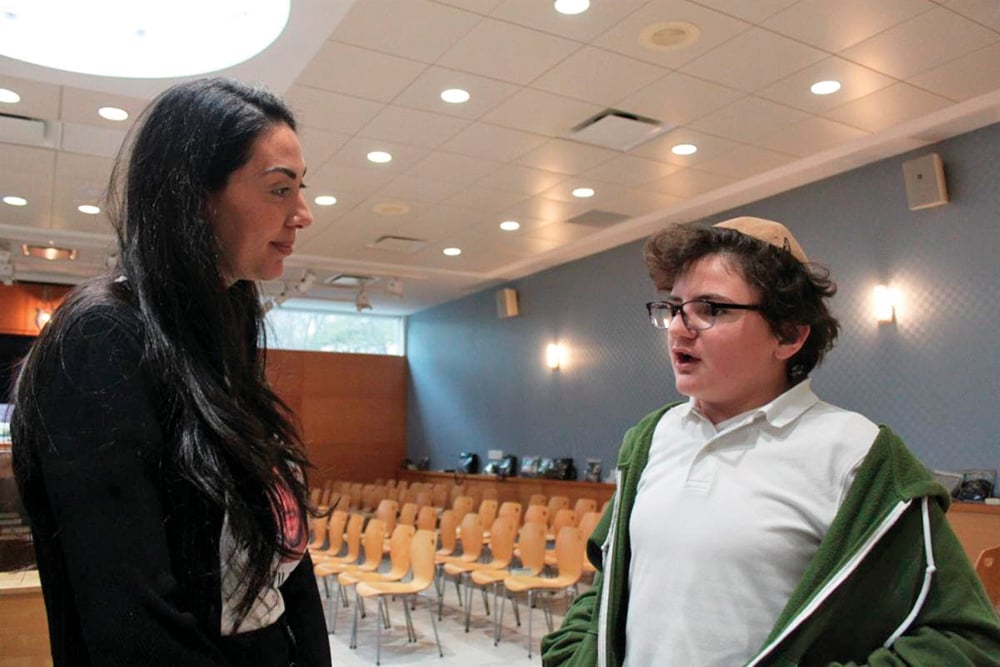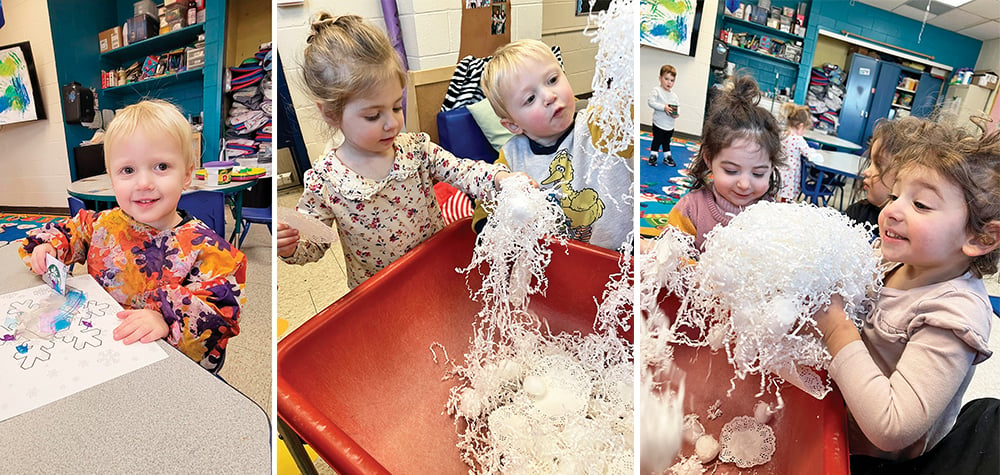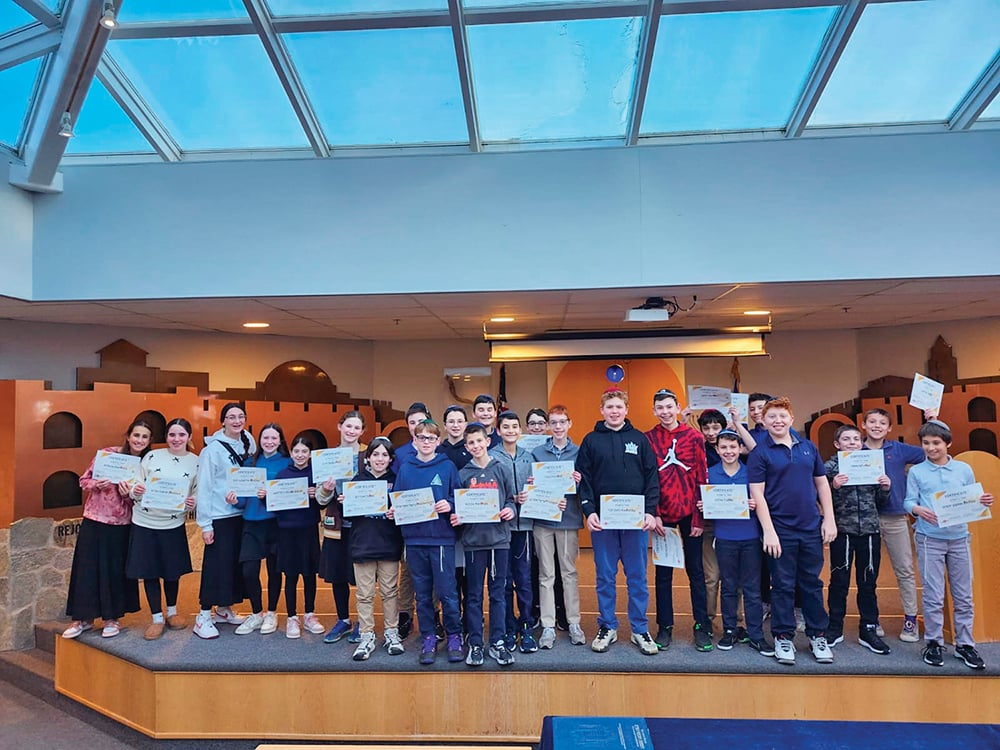Note: During the fall semester at The Idea School, students in an elective called Allied Against Hate explored with a diverse group of Teaneck High School and Drew University students the complicated relationship between the Black and Jewish communities. As part of their final project, Idea School students had to write essays that would be ready for Martin Luther King, Jr. Day. This one traces the high and fraught moments of race relations in Teaneck.
In 1951, the public school district in Topeka, Kansas, refused to enroll a Black female student at the elementary school closest to her home, instead forcing her to ride a bus to a segregated Black school farther away. The family of this student, the Browns, and 12 other local Black families in similar situations filed a lawsuit in U.S. federal court and then the Supreme Court against the Topeka Board of Education, saying that the segregation in Topeka was unconstitutional. A 9–0 vote was held in May 1954, and the case became known as Brown v. Board of Education of Topeka, a landmark decision of the U.S. Supreme Court which ruled that laws enforcing racial segregation in public schools are unconstitutional.
Despite this law, many Americans were still disinclined to have inclusive public schools, but, on May 13, 1964, the Board of Education in a town less than 10 miles from New York City voted 7-2 to have all races attend sixth grade together at the Bryant School in Teaneck, New Jersey. Only one TV camera documented this momentous first day of school. Teaneck set itself apart from every city in America by not waiting for a court to integrate students but by voluntarily implementing the court’s ruling themselves. Teaneck was a trailblazer, a model town that was anti-racist.
On the evening of April 10, 1990, a resident of Teaneck called the Teaneck Police, complaining about a group of teenagers in a schoolyard and claiming to have seen a boy with a gun. Two white officers, Gary Spath and Wayne Blanco, responded to the call and arrived at the scene to confront Phillip Pannell, aged 16, who was holding a.22 caliber pistol. The other teenagers fled, but Spath chased Pannell into a nearby backyard and eventually shot Pannell in the back, instantly killing him. The Bergen County Medical Examiner conducted an autopsy and originally concluded that Pannell was shot with his hands down, justifying Officer Spath’s actions and the retelling that Pannell was reaching into his pocket for the gun. The New Jersey Attorney General Robert Del Tufo believed that the autopsy was faulty and ordered a new one performed. The second autopsy supported witness accounts and proved that Pannell had had his hands up when he was shot in the back. After a six-week trial in 1996, Spath was found not guilty.
With this incident, the racial distrust in a town seen as an example of positive race relations was exposed. The racial equality Teaneck displayed and the pride the town took in its actions were literally and figuratively shot down 26 years later, ironically at the same place: Teaneck Road—at The Bryant School. Teaneck lost its reputation for idealism and unity in the same place it received it. Marchers stomped a mile and a half to the Teaneck Police Headquarters to protest the shooting of Phillip Pannell, meeting in the parking lot of The Bryant School. Moses Steward, whose son was shot by a mob of racist white teenagers in 1989, stated at the Teaneck march: “Racism is not in the bullet. It’s in the hands of the man who pulled the trigger. It lies in the hearts of people who think black mothers don’t love their sons.”
Twenty-six years later the retired officer, Gary Spath, spoke about the encounter: “I was perhaps 10 to 15 yards behind him as we entered the fenced-in side yard of a house, all the while yelling at him to ‘stop,’ ‘freeze,’ ‘stop’ continuously. He did not. Instead, he made a reach into his left coat pocket and turned. Feeling the immediate threat, I fired a shot. He made that same reach in his pocket and turned toward me motion [sic] a few more yards into the chase. This time I fired another shot, and the suspect went down immediately. I remember being in a trauma room at Holy Name Hospital that night and things started to sink in. There were brother officers in the room with me and they kept repeating, ‘You did the right thing, you had no choice,’ ‘There’s no doubt that if you did not fire first, he would have shot you.’ My family and I were about to experience a living hell. I was a white cop, who shot a black 16-year-old. The media had completely sensationalized the shooting and pretty much judged me to be guilty from the start.”
Beliefs about this incident split Teaneck into two groups. One side believed that Spath was in the wrong, shooting only because he saw a Black man. The other side said that Spath was correct and only shot because he saw a gun and that Officer Spath was protecting his life and the lives of others. This side would say that it cannot be assumed that every time a white cop shoots a Black individual, it’s out of racism. In the case of George Floyd, killed after his neck was restrained for over nine minutes, it can confidently be said the killing was because of racism, even if it was unconscious racism. But many would argue that the 1990 shooting of Pannell was not the result of racism, but of someone acting in self-defense. Instead of looking at both sides of the story, the innocent protesters on Teaneck Road turned violent, and a group of angry teens destroyed police cars and shattered windows of the police headquarters and the Teaneck Library, as well as 16 other businesses.
In 1994, Teaneck officers went door to door handing out surveys, and the results showed that many Teaneck respondents, especially Blacks, felt that the town’s officers were always trying to catch them doing something wrong. The Teaneck police force decided to try to mend their broken community. They hosted meetings and established neighborhood watch programs and showed civilians what it’s like being a cop. Additionally, the school district worked to address complaints that Black students were being treated less equally than white ones. All in all, conversations began about the township’s racial divisions.
After seeing the results of these efforts, Paul Ostrow, a member of the Teaneck Council, said: “We found that if we spoke to one another and looked each other in the eye and understood each other’s perspective, there will be more civility, more respect for one another. You just have to pick the right adjectives. And rather than picking hate, mistrust, separation, we picked to understand, get together, rebuild.”
After years of cruel stares in public and constant paranoia, Gary Spath finally decided that the only way to regain his life was to leave Teaneck. He and his family moved to Long Island, New York, where he acquired a job in school security.
The Pannell family found some closure, too. On October 3, 2020, Phillip’s birthday, the Township of Teaneck planted a tree at Tryon Park in Phillip’s memory. Phillip had played there as a child, and the park, just a block away from The Bryant School, was also where he and his friends had started their evening on the night of his death. However, the Pannell family is still in the process of healing.
The entry of Black residents into one of its public schools and the shooting of Phillip Pannell shaped the way Teaneck residents viewed—and still view—racism and police brutality. Teaneck has been both a model for how to increase equality in America and a paradigm of the tense race relations that still exist in the country today. I think about that when I remember coming across a sign in Teaneck in the summer of 2020. It was advertising a Black Lives Matter protest that was meeting at—you guessed it—The Bryant School.
Sources:
https://en.wikipedia.org/wiki/Brown_v._Board_of_Education
https://www.northjersey.com/story/news/2014/05/11/50-years-later-teaneck-recalls-integration-of-its-schools/94215476/ https://www.nytimes.com/1972/11/19/archives/the-lessons-of-teaneck.html https://en.wikipedia.org/wiki/Shooting_of_Phillip_Pannell
https://allthatsinteresting.com/yusuf-hawkins
https://www.blackpast.org/african-american-history/phillip-pannell-jr-1973-1990/
Mordy Barnett is a 10th grader at The Idea School.













